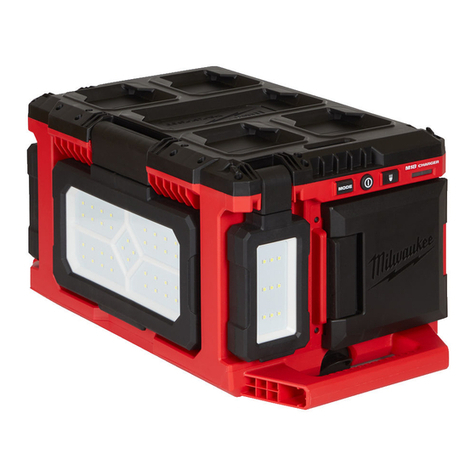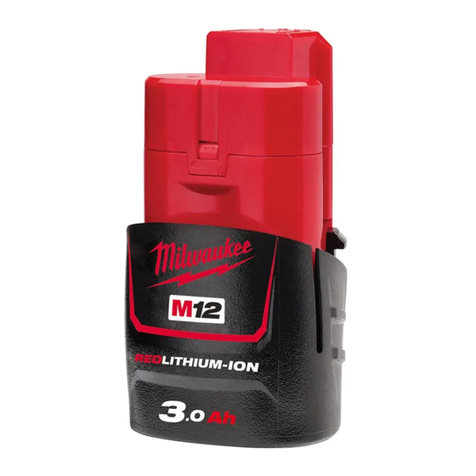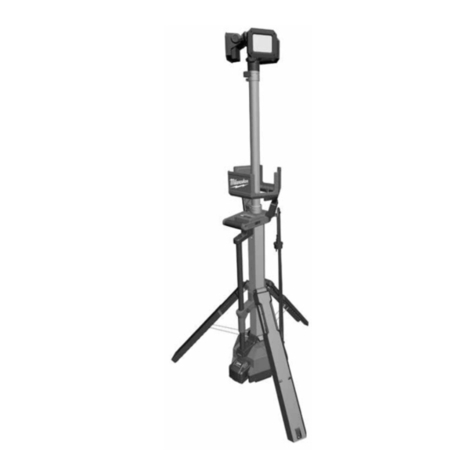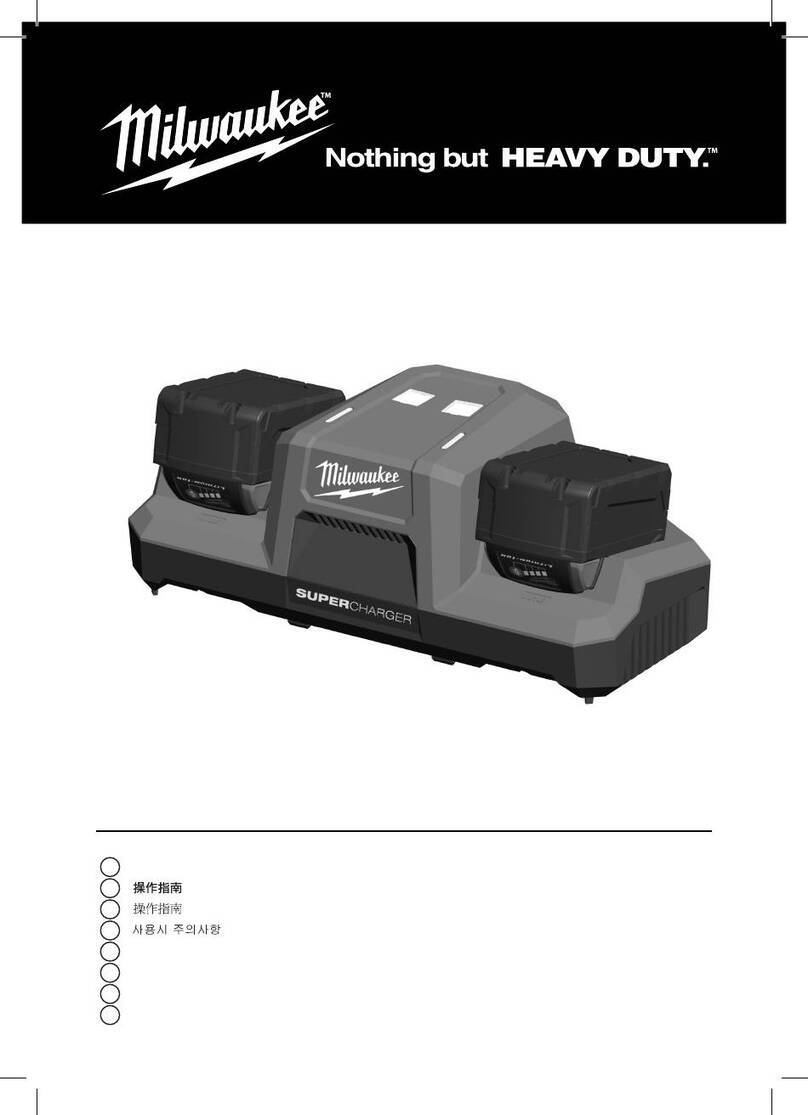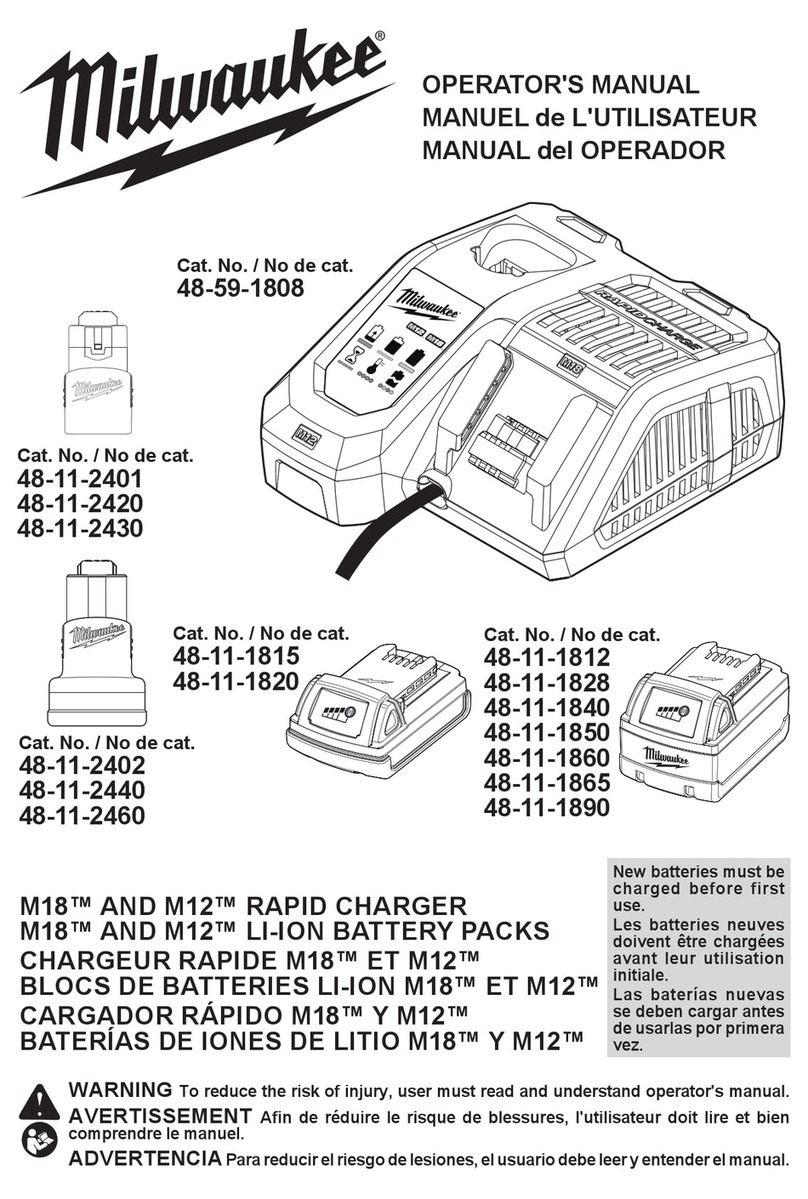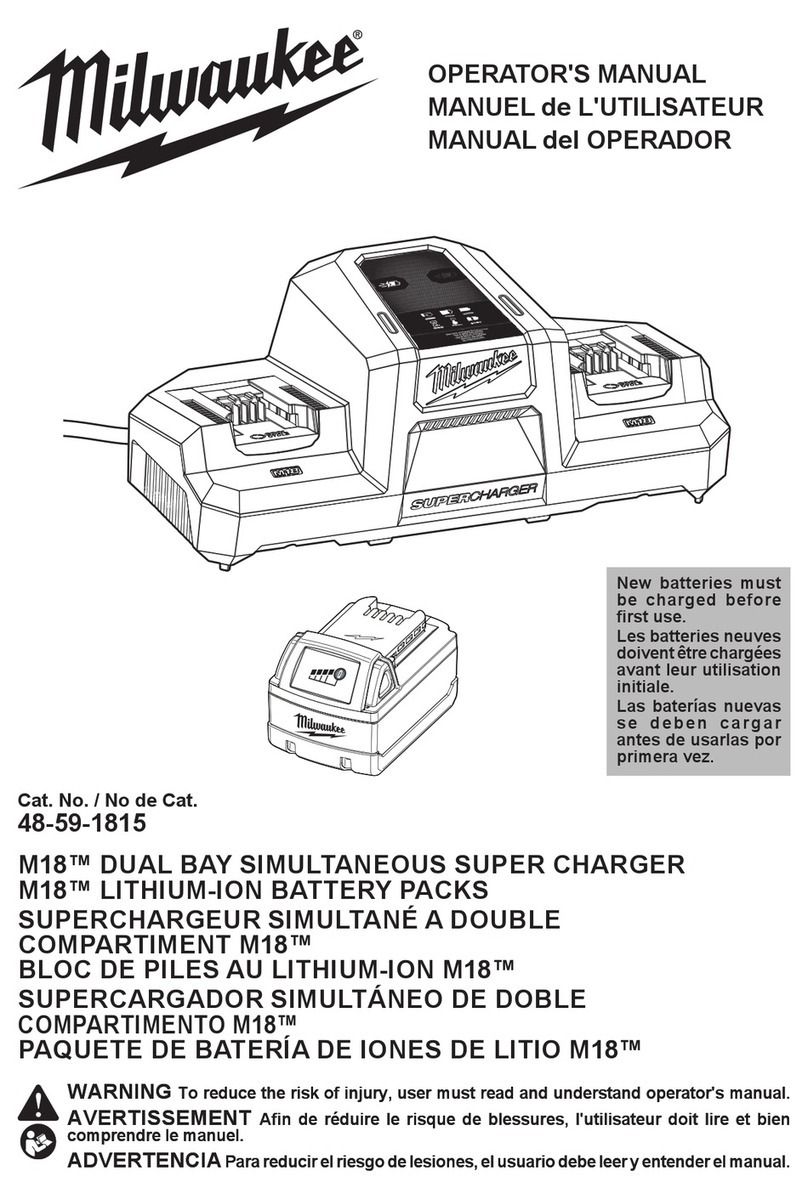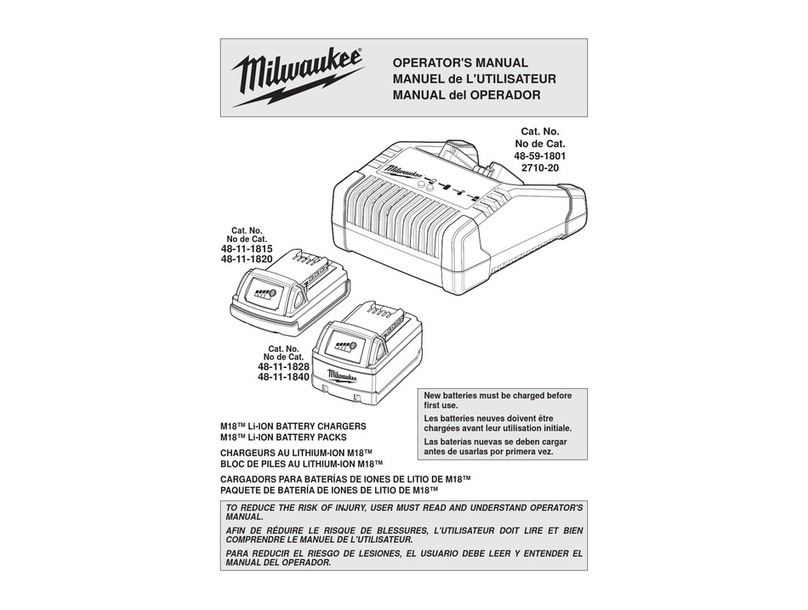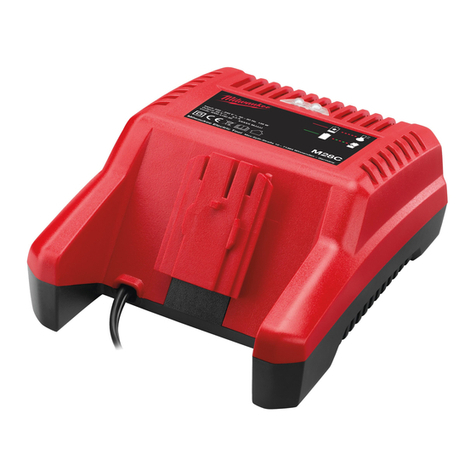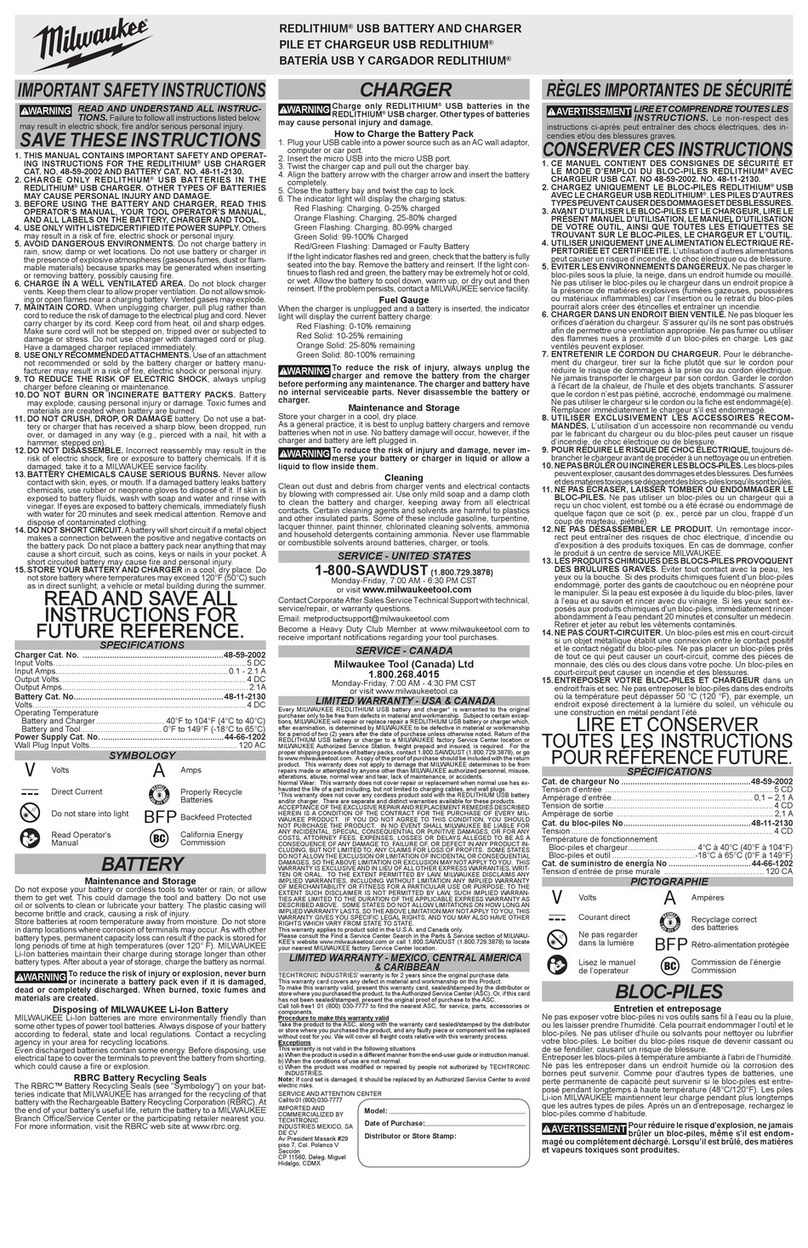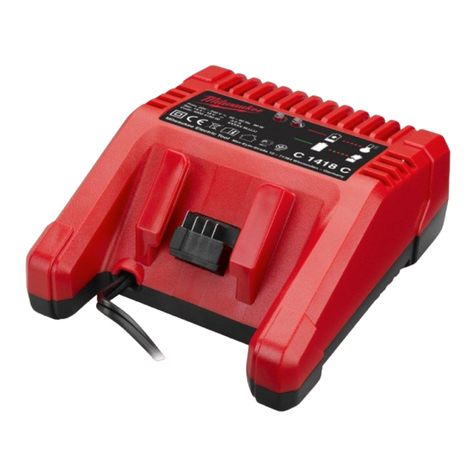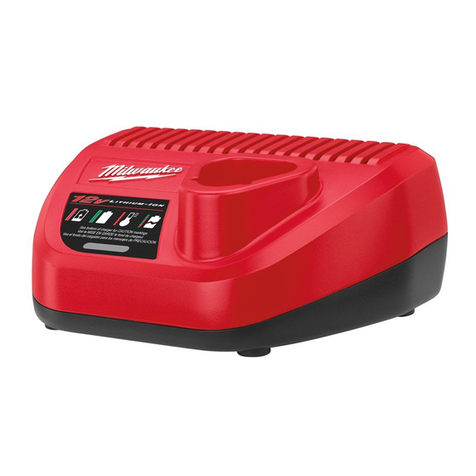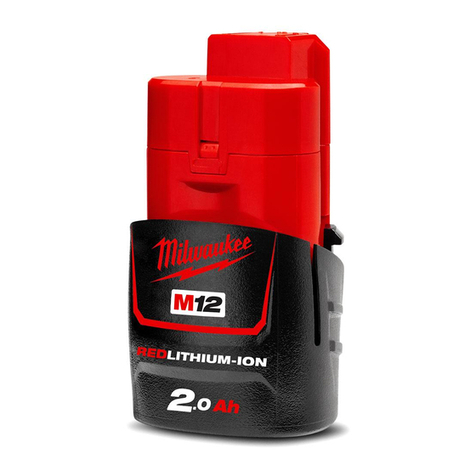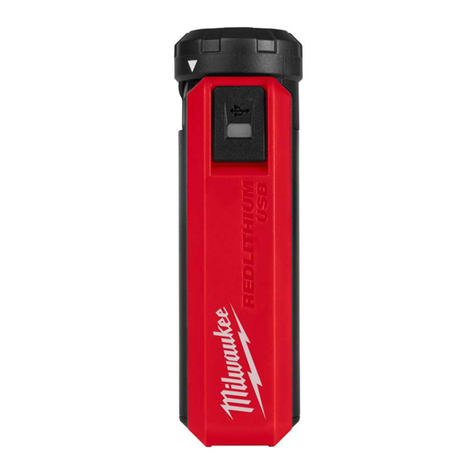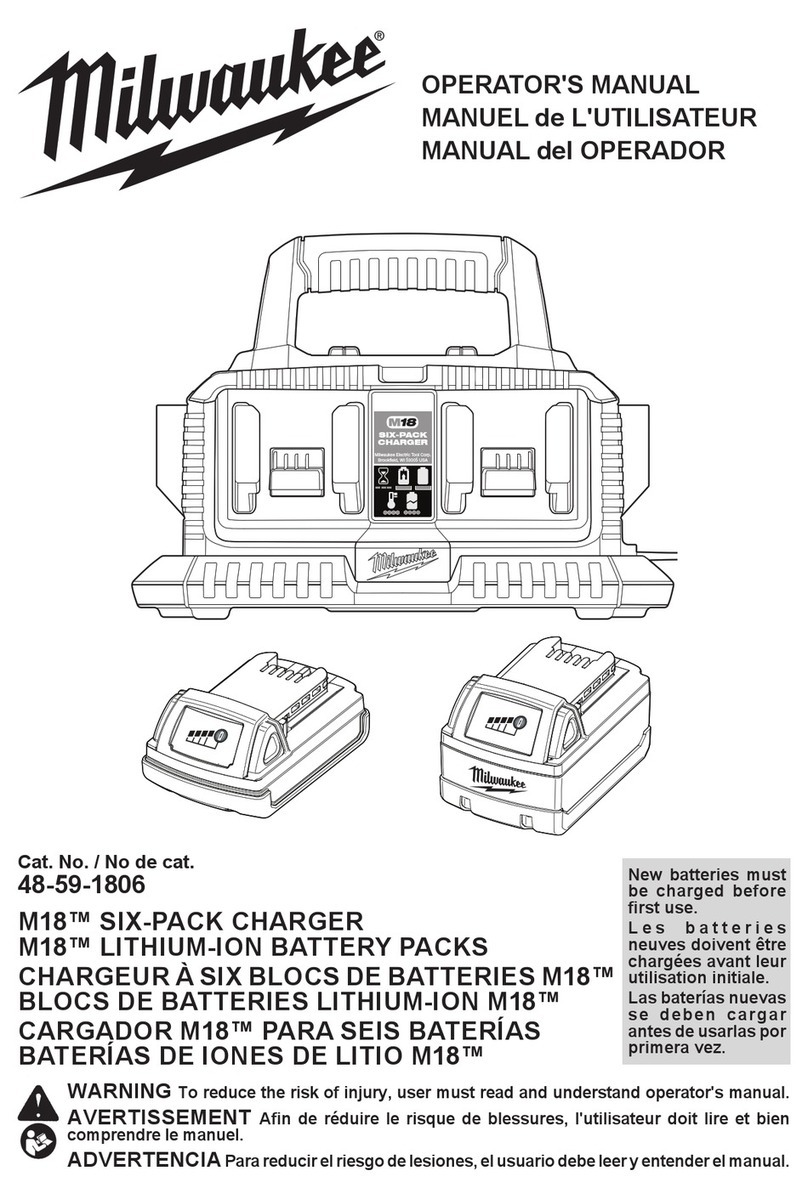
6
English
6
TECHNICAL DATA M12-18SC
Output Voltage Range 12 V, 18 V
Quick charge current 12 V DC, 4.5A
18 V DC, 13.5A
Recommended ambient charging temperature +5 °C – +40 °C
WARNING! Read all safety warnings, instructions,
illustrations, and specifications provided with this power
tool. Failure to follow all instructions listed below may result in
electric shock, fire and/or serious injury.
Save all warnings and instructions for future reference.
SAFETY INSTRUCTIONS
Do not dispose of used battery packs in the household refuse
or by burning them. MILWAUKEE distributors offer to retrieve
old batteries to protect our environment.
Only the following battery packs can be charged with this
charger:
Battery
Cat. No.
Cell
Type
DC
Volts
Capacity Cell No.
M12B Li-ion 12 V ≤1.5 Ah 3
M12BX Li-ion 12 V ≤3.0 Ah 2 x 3
M12B2 Li-ion 12 V ≤2.0 Ah 3
M12B3 Li-ion 12 V ≤3.0 Ah 3
M12B4 Li-ion 12 V ≤4.0 Ah 2 x 3
M12B6 Li-ion 12 V ≤6.0 Ah 2 x 3
M18BX Li-ion 18 V ≤3.0 Ah 2 x 5
M18B2 Li-ion 18 V ≤2.0 Ah 5
M18B4 Li-ion 18 V ≤4.0 Ah 2 x 5
M18B5 Li-ion 18 V ≤5.0 Ah 2 x 5
M18B6 Li-ion 18 V ≤6.0 Ah 2 x 5
M18B9 Li-ion 18 V ≤9.0 Ah 3 x 5
M18 HB3 Li-ion 18 V ≤3.0 Ah 5
M18 HB6 Li-ion 18 V ≤6.0 Ah 2 x 5
M18 HB8 Li-ion 18 V ≤8.0 Ah 2 x 5
M18 HB12 Li-ion 18 V ≤12.0 Ah 3 x 5
Do not try to charge non-rechargeable batteries with the
charger.
Do not store the battery pack together with metal objects (short
circuit risk).
Do not allow metal parts to enter the battery section of the
charger (short circuit risk).
Never break open battery packs or chargers, and store them
only in dry rooms. Keep battery packs or chargers dry at all
times.
The battery clamps of the charger are fed by the mains supply.
Do not touch the product with conducting objects.
Never charge a damaged battery pack. Replace the battery
pack with a new one. Before use, check the product, cable, and
plug for any damages or material fatigue. Repairs should only
be carried out by authorised service agents.
The product is not intended to be used or cleaned by persons
with reduced physical, sensory, or mental capabilities, or lack
of experience or knowledge unless they have been given
instructions concerning the safe use of the product by a person
legally responsible for their safety. They should be supervised
while using the product. Children must not use, clean, or play
with the product, which, when not in use, should be secured
out of their reach.
ADDITIONAL BATTERY SAFETY WARNINGS
WARNING! To reduce the risk of fire, personal injury, and
product damage due to a short circuit, never immerse the
product, battery pack, or charger in fluid or allow fluid to flow
inside them. Corrosive or conductive fluids, such as seawater,
certain industrial chemicals, and bleach or bleach-containing
products, etc., can cause a short circuit.
SPECIFIED CONDITIONS OF USE
The charger charges 12 V and 18 V MILWAUKEE Li-ion
battery packs.
Do not use the product for any other purpose.
MAINS CONNECTION
Connect the charger only to single-phase AC current and only
to the system voltage indicated on the rating plate. It is also
possible to connect to sockets without an earthing contact as
the design conforms to safety class II.
LI-ION BATTERIES
The rechargeable batteries are partially charged. The LED on
the battery indicates the state of charge.
If the battery pack is not used for long periods, it switches to a
non-operative state.
When fully discharged, the battery pack turns offautomatically
(depth discharge is not possible).
Under extreme circumstances, the internal temperature of
the battery pack could become too high. If this happens, the
battery pack shuts down. Charge the battery pack and reset it.
Press the button on the battery pack to read the state of charge
of the battery pack. If taking the reading while the battery pack
is installed, the tool must be turned offfor at least 1 minute;
otherwise, the display will be inaccurate. The number of LEDs
illuminated indicates the state of charge. A flashing LED
indicates a maximum power reserve of 10%.
If the tool fails to work after inserting the battery pack, recharge
the battery pack. The displays on the battery pack and charger
provide information about the condition of the battery pack.
In low temperatures, work may continue at reduced output.




